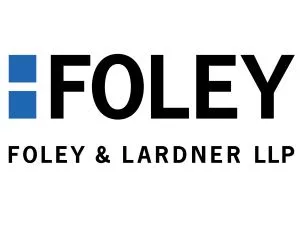A divided Federal Circuit denied the petition for rehearing en banc that would have required the court to revisit its decision in In re Cuozzo Speed Technologies, LLC (Fed Cir 2015), that upheld the USPTO's use of the "broadest reasonable interpretation" of the claims in Inter Partes Review (IPR) proceedings. Thus, it will be up to Congress to change the claim construction applied in PTAB proceedings, as it might do if the Innovation Act (H.R. 9), the STRONG Patents Act (S. 632) or the PATENT Act (S. 1137) are passed into law.
The Concurring Opinion Approving BRI
Judge Dyk authored a concurring opinion approving the USPTO's use of the "broadest reasonable interpretation" (BRI) claim construction standard in all proceedings. As he did in his panel opinion in Cuozzo, Judge Dyk noted that the USPTO has applied the BRI "in a variety of proceedings for more than a century," and found "nothing" in the America Invents Act indicating a "congressional intent to change the prevailing [BRI] standard." Judge Dyk noted that Congress gave the USPTO rulemaking authority to prescribe regulations "establishing and governing inter partes review," and that the USPTO exercised such authority and adopted the BRI standard for IPR proceedings in 37 CFR § 42.100(b). Judge Dyk concluded, "If the standard is to be changed, that is a matter for Congress," and noted the pending legislation that would do just that.
Judges Lourie, Chen, and Hughes joined Judge Dyk's concurring opinion.
The Dissenting Opinions Disapproving BRI
Chief Judge Prost and Judges Newman, Moore, O'Malley and Reyna are named on a joint dissenting opinion disapproving of the use of the BRI standard in IPR proceedings. As reflected in the opening paragraph, the main thesis of the dissenters is that a district court-like claim construction should be applied in IPR proceedings, since Congress intended IPRs to be an alternative to district court litigation, and IPRs involve granted patents and provide only a limited opportunity to amend claims.
Inter partes review ("IPR") is a new, court-like proceeding designed to adjudicate the validity of issued patent claims. In adjudicatory proceedings, claims are given their actual meaning, not their broadest reasonable interpretation.
The dissenters also questioned whether the USPTO's BRI rule was entitled to any deference, since it probably falls on the substantive side of the substantive vs. procedural divide and, in their view, is contrary to Congressional intent to establish IPR proceedings as an administrative alternative to district court proceedings.
Judge Newman authored a separate dissenting opinion that emphasizes that "[a]ll of the amici curiae" who filed briefs with regard to the petition for rehearing en banc criticized the use of the BRI standard:
The amici curiae stress the need for investment-reliable patent rights, and the AIA's purpose of establishing this new administrative adjudicative authority. This purpose collapses if the PTO applies a unique rule of patent claim construction, different from the law of claim construction that is applied in the courts. The public interest in technological advance, and the national interest in a vigorous economy served by growth, employment, creativity, and trade, require that this court accept the petition for en banc rehearing.
Although Judges Reyna, Wallach and Taranto did not join any of the opinions, at least two of them must have voted against granting the petition (e.g., approving BRI) in order for the petition to have been denied.
Will Congress Eliminate The BRI?
As noted above, both the Innovation Act (H.R. 9) and the PATENT Act (S. 1137) would require the USPTO to apply district court-like claim construction in PTAB proceedings including IPRs. The Senate Judiciary Committee approved the PATENT Act on June 4, 2015 and the House Judiciary Committee approved the Innovation Act on June 11, 2015. If these bills continue moving forward, Congress could eliminate the BRI in post-grant proceedings.
The content of this article is intended to provide a general guide to the subject matter. Specialist advice should be sought about your specific circumstances.


